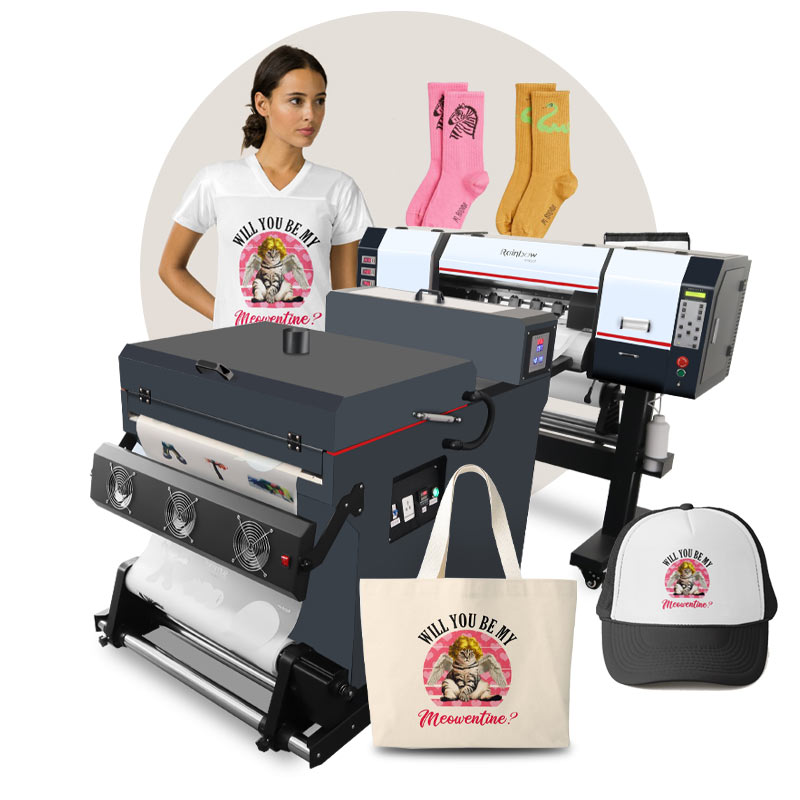A Deep Dive into DTF Printing: Strategies, Benefits, and Sector Applications
Grasping DTF Printing: Idea for Getting Vibrant and Sturdy Prints
In the globe of fabric printing, attaining sturdy and vibrant prints is a sought after ability that can boost the high quality of your output. From picking the ideal products to make improvements print setups and perfecting post-printing ending up strategies, there are countless elements that can affect the result of your prints.

DTF Printing Essentials
For those new to the globe of textile printing, comprehending the principles of DTF printing is vital to mastering this innovative strategy. Straight to Film (DTF) printing is a modern-day method that includes moving layouts from a special movie onto various fabrics making use of a warm press. Unlike standard methods like display printing, DTF uses advantages such as vibrant colors, intricate detailing, and the capability to print on diverse materials like cotton, polyester, and blends.
The procedure starts by printing the layout on a special DTF film making use of a suitable printer with CMYK or CMYKW ink sets. As soon as the design is printed, it is after that healed with a warmth press to develop a resilient and durable print. DTF printing is recognized for its ability to replicate complex styles with high precision and color accuracy, making it a prominent choice for companies seeking to create custom garments, marketing items, and extra.
Selecting the Right Products

The glue powder acts as a bonding representative between the published layout and the textile, so it has to have strong adhesion residential properties to guarantee a resilient and long-lasting transfer. By thoroughly picking the right products for DTF printing, printers can improve the quality, vibrancy, and longevity of their prints.
Optimizing Publish Setups
When aiming to achieve the very best lead to DTF printing, thorough focus to optimizing print setups is important for making certain premium and accurate transfers onto textiles. click to read more When maximizing print setups is the resolution, one vital aspect to consider. Greater resolutions normally lead to sharper and much more comprehensive prints, enhancing the general high quality of the transfer. Additionally, changing the ink density can help ensure and accomplish vibrant colors that the style stands out on the textile.
One more important setup to optimize is the print rate. Finding the ideal balance between speed and quality is necessary. While raising the speed can enhance efficiency, it may jeopardize the last print's quality and color saturation. Try out various rates and observing the results can assist identify the optimum setup for each and every print task - DTF Printing.
Furthermore, make improvements color profiles and making certain correct color administration are vital for achieving consistent and accurate colors across various prints. By adjusting color settings and profiles, printers can minimize color discrepancies and produce uniform results, boosting the general print quality and customer satisfaction.
Preparing Art Work for DTF Printing
Convert the artwork to CMYK shade mode to make sure that the colors translate accurately from display to print. Bear in mind to mirror the last layout prior to printing to ensure that it moves appropriately onto the garment. By following these actions and paying close interest to the information, you can prepare art work that is maximized for lively and long lasting DTF prints.
Post-Printing Finishing Techniques
Implementing effective post-printing finishing methods is essential to boosting the longevity and aesthetic charm of DTF prints on textiles. Once the printing procedure is total, using warmth to the published design is vital.
As soon as next page the movie is eliminated, the print may need extra treating time to better set the ink into the fabric. This step assists boost the washability and toughness of the print, guaranteeing it can stand up to several wash cycles without fading or splitting.
In addition, cutting any excess film around the layout can provide the final print a specialist and clean look. Making the effort to appropriately complete DTF prints post-printing can significantly impact the total quality and durability of the fabric design.

Verdict
To conclude, grasping DTF printing needs an extensive understanding of the basics, picking appropriate materials, maximizing print setups, preparing art work efficiently, and using post-printing ending up techniques. By following these methods and pointers, one can achieve resilient and dynamic prints that meet their preferred high quality criteria. Constant technique and attention to information are necessary in achieving successful outcomes in DTF printing.
From selecting the best products to fine-tuning print setups and refining post-printing ending up strategies, there are numerous factors that can influence the outcome of your prints. Unlike typical approaches like display printing, DTF uses benefits such as lively colors, intricate outlining, and the capability to print on varied materials like cotton, polyester, and blends.
When the design is printed, it is after that cured with a warm press to produce a resilient and long lasting print.When aiming to accomplish the finest results in DTF printing, meticulous focus to maximizing anonymous print setups is critical for guaranteeing premium and exact transfers onto textiles.In verdict, understanding DTF printing requires a detailed understanding of the fundamentals, choosing ideal materials, optimizing print setups, preparing art work effectively, and using post-printing completing methods.